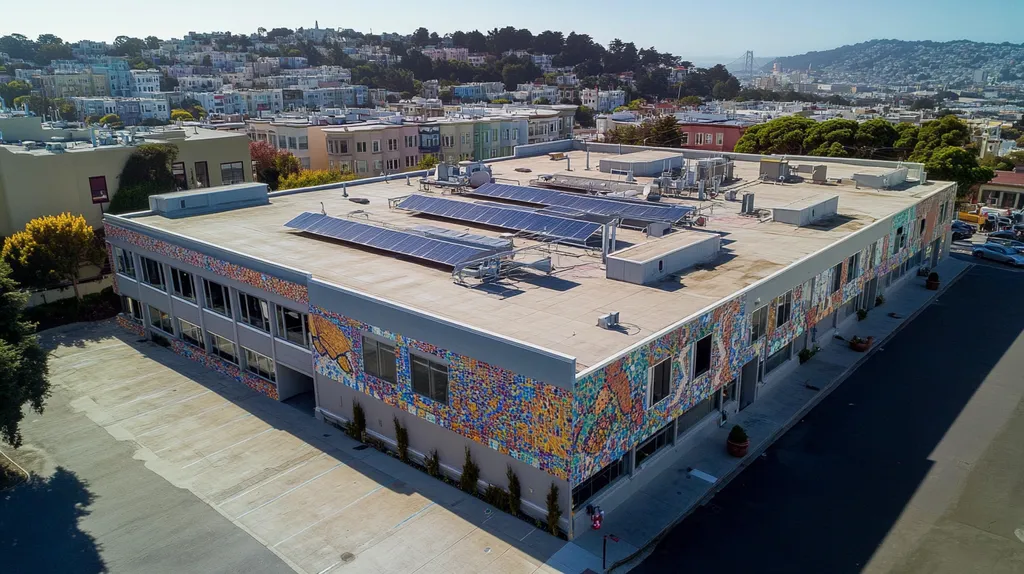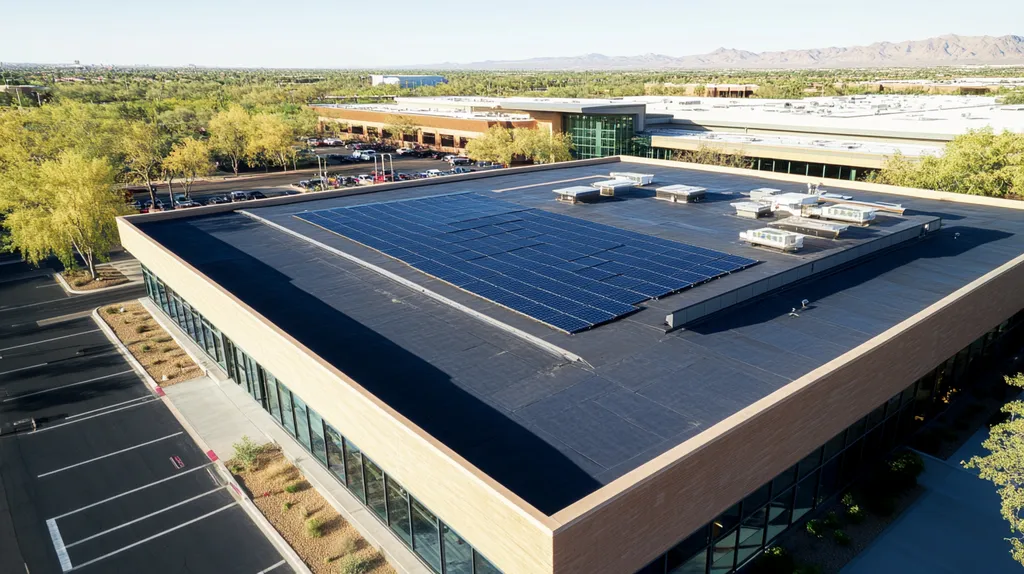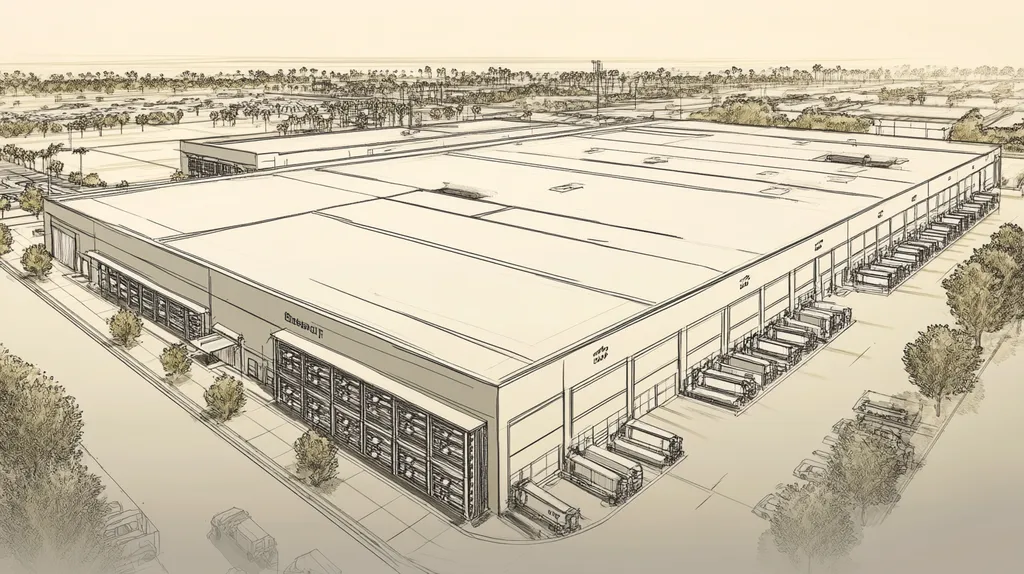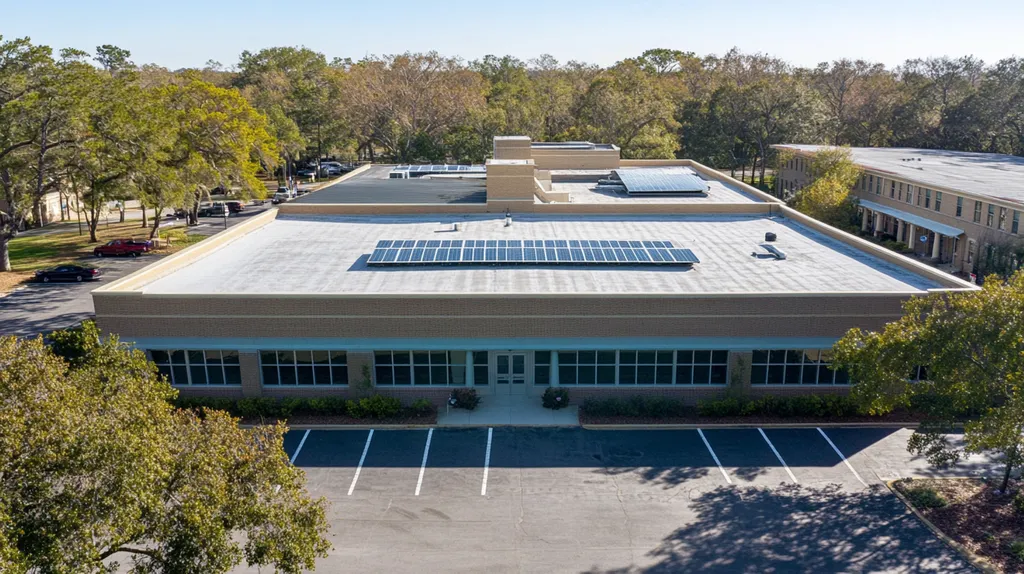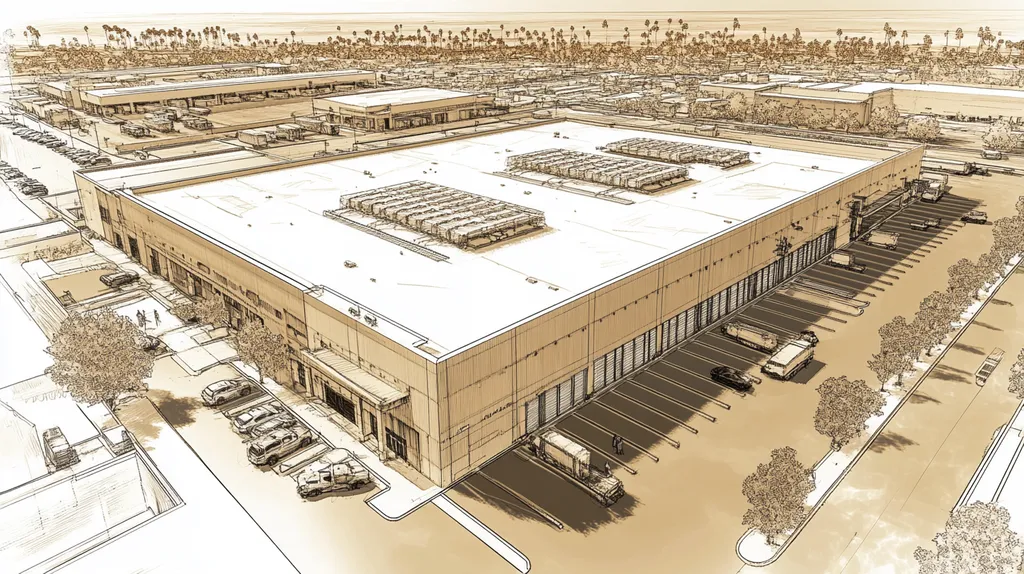As commercial buildings age across America, property owners face a critical decision: restore their roofs to match historical aesthetics, or embrace modern innovation. Studies show that 65% of historical roof restorations fail within the first decade due to outdated materials and methods.
The rush to preserve architectural heritage often leads property managers to overlook crucial advances in roofing technology that could extend their building’s lifespan while maintaining its character.
This analysis challenges conventional wisdom about historical restoration, revealing how rigid adherence to traditional practices may actually compromise both safety and sustainability.
SECTION 1: CURRENT PRACTICES
The challenge of restoring commercial roofs is becoming increasingly urgent, as property owners strive to preserve the historical integrity of their buildings. With age, roofs must provide reliable protection while also echoing the architectural stories they tell. Current practices often lean on outdated materials and methods that don’t quite match the modern requirements for energy efficiency and durability. This section delves into traditional materials, restoration techniques, and the complexities of compliance with historical codes—revealing a pressing need for evolution in the industry.
Traditional Materials in Use
When it comes to restoration, many commercial roofs default to time-honored materials like asphalt and modified bitumen. These longstanding choices stem from a perception of reliability and cost-effectiveness. However, they frequently fail to replicate the authentic historical appearance that restorations aim to achieve.
Take asphalt roofs, for instance; these may require regular maintenance and premature replacements, which can result in higher overall costs for property owners. Those who focus solely on initial savings could find themselves facing hefty bills down the line due to increased upkeep needs.
Additionally, traditional materials often lack sufficient insulation and energy efficiency. This mismatch between the desire for historical aesthetics and the need for modern performance creates a challenge for facilities managers trying to balance both priorities.
To navigate these waters, an approach that integrates modern materials while honoring historical designs is vital. Innovative products exist that offer more authentic aesthetic replication but remain underutilized in conventional restoration practices.
Restoration Techniques and Methods
Today’s restoration techniques often opt for the quick and easy route, relying on patchwork solutions rather than comprehensive fixes. This approach can undermine both the roof’s functionality and its original architectural charm. Techniques such as resurfacing or applying reflective coatings may not align with historical aesthetics.
Patching an existing roof might seem like a cost-effective strategy, but it often sidesteps deeper, underlying issues. Left unaddressed, these problems can escalate, ultimately leading to more expensive repairs or even whole roof replacements.
Moreover, many current restoration methods overlook advanced technologies that could enhance outcomes. For example, modern thermal imaging can detect leaks or structural weaknesses invisible to the naked eye, enabling precise repairs that respect historical integrity.
By embracing emerging technologies and innovative methods, facility managers can achieve restoration results that honor both functionality and aesthetics without sacrificing historical significance.
Compliance with Historical Codes
Navigating the maze of historical preservation codes presents another significant challenge in roofing restoration. These regulations are crucial for maintaining the integrity of historic buildings but can sometimes obstruct the adoption of more effective solutions. Many existing codes place too much emphasis on aesthetics, potentially missing out on the benefits of modern advancements.
For instance, employing contemporary materials that beautifully mimic historical appearances may clash with strict codes that mandate the use of original materials. This limitation poses a dilemma for property owners striving to achieve both compliance and sustainability.
The evolving nature of these codes can also leave property owners feeling lost in a sea of regulations. Staying updated while managing the intricacies of roof restoration demands considerable effort and expertise.
Merging updated materials with compliance knowledge can bridge the gap between preservation and innovation, allowing for a respectful nod to history while ushering in enhanced efficiency for commercial roofs.
SECTION 2: SYSTEMIC ISSUES
Restoring a commercial roof’s historical appearance is a high-stakes endeavor that goes beyond aesthetics; it comes with a set of complex challenges. Property owners frequently grapple with the conflicting demands of maintaining historical authenticity while addressing functional needs. Research shows that nearly 60% of commercial property managers identify compliance with historical standards as a significant obstacle to effective roofing renovations. This section unpacks the intricacies and hurdles involved in achieving this delicate equilibrium.
Balancing Authenticity and Practicality
The crossroads of authenticity and practicality poses a crucial decision for roof restorations. Many historical roofs were crafted with materials and techniques that falter under today’s performance expectations. Utilizing traditional materials can often lead to long-term durability issues, making it a risky bet for property owners.
For instance, slate and clay tiles, common on historical buildings, demand significant upkeep and may not withstand severe weather, leading to costly leaks and repairs. A more sensible approach often involves using modern materials that effectively mimic historical styles while delivering superior performance.
Additionally, integrating modern insulation and drainage systems can vastly improve energy efficiency. This balance is essential, as neglecting practicality could tarnish the value of preserving historical aesthetics.
This conflict can also inflate costs; property owners must weigh the investment in historical accuracy against potential ongoing maintenance headaches. Ultimately, a thoughtful approach to restoration can harmonize past and present while mitigating risks.
Limitations of Historical Materials
While they evoke nostalgia, historical materials can hinder progress. Take wood shakes as an example; they may not meet modern fire safety standards, increasingly placing properties at risk. Additionally, sourcing these materials can extend project timelines and inflate costs unexpectedly.
Moreover, many original installation techniques are outdated and may fail to provide adequate waterproofing or ventilation, leading to long-term issues such as mold growth and structural damage. Such problems can translate to increased operational expenses in the long run.
Research suggests that buildings utilizing modern materials can cut lifecycle costs by up to 30%. Prioritizing modern replacements that maintain the look of historical options can extend roof lifespan and boost overall property value.
Thus, transitioning to contemporary roofing solutions that marry historical charm with modern efficiency is key for savvy property management.
Compliance vs. Modern Safety Standards
The quest for compliance with historical restoration guidelines often encounters roadblocks with contemporary safety and building codes. Many vintage roofing methods and materials no longer meet current regulations, complicating matters for property owners. Non-compliance can result in penalties, affecting both finances and reputations.
For instance, roofs that fail to satisfy current stormwater management regulations may encounter substantial drainage issues, heightening the risk of water damage and subsequent repair costs over time. Such setbacks can undermine any initial investments made in historical restoration.
Furthermore, property owners must navigate a labyrinth of local, state, and federal regulations concerning historical preservation. Collaborating with professionals who understand both compliance mandates and practical roofing solutions is crucial to avoiding costly missteps.
As regulations evolve, property owners should prioritize solutions that ensure safety and performance while honoring historical aesthetics—securing both long-term sustainability and legal compliance.
SECTION 3: MISSED OPPORTUNITIES
In a rapidly evolving landscape of commercial roofing technology, many property owners find themselves missing out on invaluable opportunities by fixating solely on restoring a roof’s historical appearance. Alarming research indicates that 45% of property owners overlook the advantages that modern roofing solutions can provide. This section dives into the repercussions of dismissing innovations, sustainability benefits, and the significant cost savings associated with contemporary roofing options.
Overlooking Modern Innovations
The roofing industry has witnessed remarkable advancements in materials and techniques designed to enhance roof longevity and performance. For instance, reflective coatings are now available that preserve the beauty of traditional designs while also boosting energy efficiency. By ignoring these innovations, property owners risk frequent repairs and costly replacements that ultimately drain their budgets.
Modern roofing systems also often feature intelligent technology, enabling real-time monitoring of roof conditions. This proactive approach identifies potential issues before they escalate into expensive repairs. When property managers prioritize only appearance over functionality, they miss out on these game-changing technologies that promise superior performance and durability.
Additionally, advanced materials such as thermoplastic polyolefin (TPO) and ethylene propylene diene terpolymer (EPDM) exhibit exceptional resilience against harsh weather conditions. The choice to cling to older materials can compromise the structural integrity of the entire building, leading to increased maintenance demands and costs.
By embracing modern innovations, property owners can elevate restoration efforts—pushing beyond mere aesthetics into a realm of enhanced performance and durability that benefits both the building and its occupants.
Ignoring Sustainability Benefits
As property owners focus on restoring traditional roofing designs, the sustainability advantages of modern solutions are often swept under the rug. Sustainability is not merely a passing trend—it’s an essential consideration that impacts both operational costs and environmental accountability. Green roofing options like living roofs or energy-efficient materials provide substantial benefits beyond just looks.
For example, using reflective roofing materials can lead to dramatic reductions in energy consumption. These materials reflect sunlight, lowering cooling costs during the summer months and making for a more efficient building overall. Overlooking these modern materials means sacrificing immediate cost reductions and long-term environmental benefits.
Moreover, emphasizing sustainability can significantly boost a property’s market appeal. With tenants increasingly looking for environmentally conscious options, a building equipped with sustainable roofing solutions can command higher rents and attract businesses focused on green practices.
Ultimately, neglecting sustainability in roof restoration translates into missed opportunities that can benefit not just the property owner, but also the community at large.
Neglecting Long-Term Cost Savings
When property owners prioritize historical aesthetics in roof restoration, they often ignore the long-term financial implications. Initial restoration costs might seem appealing, but the reality is that hidden expenses from frequent maintenance and premature replacements can escalate quickly. Long-term cost savings should take center stage in any roofing decision-making process.
Investing in quality materials and contemporary techniques can drastically extend a roof’s lifespan. For instance, a well-installed energy-efficient membrane can last up to twice as long as traditional roofing systems, leading to significant savings over time. This means that the upfront investment can pay off in reduced repair and replacement expenses.
Furthermore, modern roofs typically demand less maintenance compared to traditional materials. The financial benefits from fewer inspections and repairs can flow straight to the property owner’s bottom line. Ignoring these practical considerations can lead to ongoing costs that are easily avoidable.
In conclusion, an exclusive focus on historical restoration can significantly diminish the broader benefits of a commercial roof. Long-term financial viability ought to steer decisions, ensuring roofs are not only resilient but also cost-effective and advantageous for the future of the property.
SECTION 4: ROOT CAUSES
The quest to restore a commercial roof’s historical charm is not without its hurdles, and understanding the root causes behind these challenges is essential. Property owners and facility managers often grapple with ingrained practices that hinder the adoption of modern techniques. Outdated regulations can misdirect these restoration efforts, leading to inefficiencies that impact long-term sustainability. By identifying and addressing these barriers, stakeholders can enhance property value while honoring the past.
Lack of Integration with Modern Technology
A prominent obstacle in the restoration landscape is the insufficient integration of cutting-edge technology. Many commercial roofs still rely on traditional materials and outdated techniques, neglecting innovative solutions like advanced waterproofing systems or energy-efficient coatings.
This reluctance to embrace modernization not only inflates maintenance costs but also results in heightened energy consumption and frequent repairs—all of which eat into the bottom line.
Modern materials and technologies can harmonize historical aesthetics with enhanced durability. For instance, smart reflective membranes can preserve a roof’s vintage look while significantly boosting its operational efficiency.
Prioritizing the adoption of these advanced technologies can pave the way for a more resilient and energy-efficient roof restoration that respects the building’s heritage.
Inadequate Training and Expertise
The skills gap in the roofing industry exacerbates the challenges of historical restorations. Many roofing contractors lack the specialized training needed to carefully blend traditional aesthetics with modern techniques. This gap can often lead to restorations that fall short of expectations in both functionality and historical fidelity.
For example, contractors solely experienced in contemporary materials might not grasp the nuances of working with older roofing systems. As a consequence, vital design elements may be inadvertently compromised, stripping away the building’s authentic character.
The shortage of training programs targeting both historical preservation and modern roofing solutions is concerning. Investing in specialized education will equip future contractors to handle these complex projects effectively, combining innovation with respect for history.
Enhancing industry training will empower professionals to merge cutting-edge practices with historical sensitivity, ensuring that properties retain their unique charm and long-term value.
Regulatory Barriers to Innovation
Regulatory hurdles further complicate the landscape of commercial roof restoration. Current codes often emphasize adherence to traditional standards, which can stifle the adoption of innovative materials and methods. This rigidity not only curtails creativity but can also impose stricter operational costs on older structures.
For instance, regulations may restrict the use of cutting-edge materials that enhance energy efficiency while preserving the historical look. This limitation can lead to higher maintenance costs, putting additional strain on property owners trying to strike a balance.
Additionally, navigating the permit process for non-traditional restoration methods can be time-consuming and frustrating. Delays in regulatory approvals can prolong projects and inflate budgets, potentially deterring property owners from pursuing innovative options.
Advocating for updated regulations that embrace modern techniques yet respect historical aesthetics is vital. Streamlining these processes will create a more supportive environment for sustainable and successful restoration projects.
DATA DRIVEN EVIDENCE
The race to restore the historical charm of commercial roofs is fraught with peril—and the statistics tell a cautionary tale. An alarming 30% of attempted restorations not only falter in preserving integrity but also detract from aesthetic value. These failures often lead to costly repairs and significant rework, eroding the very historical significance that property owners aim to uphold. For those contemplating restoration, understanding these challenges is paramount. This section delves into case studies of failed restorations, a comparative analysis of materials, and the economic impact associated with traditional methods.
Case Studies of Failed Restorations
Case studies spotlight prevalent missteps in the quest to restore commercial roofs. Take, for instance, a warehouse in New England that poured resources into a slate restoration, only to succumb to water infiltration mere months later. The underlying structure wasn’t adequately reinforced to support the additional weight, leaving the building vulnerable.
In another scenario, a historic office building endeavored a copper restoration for aesthetic enhancement. Unfortunately, subpar installation resulted in severe leaks that curtailed usability and racked up staggering repair bills. These cautionary tales underscore the necessity of comprehensive building assessments before embarking on any restoration journey.
Failure to grasp the existing structure’s nuances can lead to misguided choices. Each of these projects serves as a sobering reminder that while history deserves respect, modern engineering standards must not be neglected. Industry professionals must glean insights from such failures to foster more successful restoration outcomes in the future.
Comparative Analysis of Materials
A thorough evaluation of materials reveals striking contrasts in performance and durability. Traditional options, such as slate and tile, may charm with their aesthetics but often fall short of our contemporary needs, particularly regarding insulation and water management. This misalignment can spawn costly maintenance headaches.
In contrast, modern synthetic materials like TPO and PVC membranes offer impressive longevity and energy efficiency—indeed, they often come at comparable price points. While they may not perfectly mimic historical styles, adaptation efforts can seamlessly incorporate these materials within modern design frameworks.
Moreover, the initial cost savings associated with traditional materials can be deceiving. The long-term expenses tied to recurrent repairs and maintenance typically eclipse these initial investments. Analyzing the full life-cycle costs of materials proves crucial when making restoration decisions that will affect both appearance and financial bottom lines.
Employing a data-driven approach to material selection can refine restoration strategies, helping property owners bridge the gap between honoring history and enhancing modern functionality. Involving roofing professionals skilled in materials science is a smart move that fosters sustainable solutions, harmonizing historical significance with today’s demands.
Economic Impact of Traditional Methods
The financial ramifications of sticking with conventional restoration methods can be staggering. As previously highlighted, unnecessary costs associated with failed restorations can place substantial strain on property budgets—particularly for heritage buildings where funding and resources are already stretched thin.
Repair expenses represent just one layer of this financial burden. The potential dip in property value due to aesthetic misalignments with historical expectations can compound losses, as a flawed restoration not only damages roofs but also diminishes a building’s standing in its community.
Additionally, delays due to restoration setbacks can paralyze businesses housed within such properties. A building that remains inaccessible extends beyond lost revenue; it risks deterring future occupancy and investment opportunities.
Choosing an experienced roofing contractor who appreciates the intersection of history and modern materials can mitigate these economic pitfalls. Engaging professionals early in the planning process ensures that aesthetics and durability receive the meticulous attention they require, bolstering the building’s market viability and long-term appeal.
SECTION 6: ALTERNATIVE SOLUTIONS
In the ever-evolving landscape of commercial roofing, the pressure is mounting for property owners to harmonize the visual charm of historical aesthetics with the demands of modern functionality. With outdated restoration methods often endangering structural integrity and energy efficiency, the need for innovative alternatives is imperative. Not only do these solutions aim to preserve the character of historical buildings, but they also ensure compliance with current performance standards. This section will delve into hybrid restoration approaches, advanced materials, and sustainable practices that effectively address this critical balancing act.
Hybrid Approaches to Roof Restoration
Hybrid restoration techniques cleverly blend traditional and modern methods to achieve both aesthetic appeal and functional integrity. Picture this: a property owner might preserve iconic roofing materials while integrating modern systems that enhance insulation and water resistance. This dual approach not only safeguards the building’s historical charm but also boosts overall performance.
By opting for hybrid methods, property owners can significantly minimize roof tear-off waste, which is a win for both the environment and the wallet. Specific sections can be targeted for restoration, allowing for the preservation of cherished architectural elements while updating the roof with materials that offer improved energy efficiency. Hybrid restoration strikes a balance between nostalgia and practicality, making this strategy a viable and responsible choice.
Furthermore, these methods can extend a building’s lifespan. Combining old elements with new innovations can lead to eye-catching structures that respect historical integrity while benefiting from modern engineering breakthroughs. Ultimately, hybrid restoration not only preserves history but also makes financial sense for property owners in the long run.
Advanced Materials and Techniques
The advent of advanced materials has revolutionized the roof restoration process. Among these cutting-edge options are cool roofing membranes and reflective coatings that dramatically improve how buildings manage heat and energy costs. For instance, reflective materials can significantly reduce heat absorption, effectively slashing cooling bills during hot summer months.
Alongside energy efficiency, modern materials are engineered for greater durability. Many new products excel in extreme weather conditions, ensuring longevity for a restored roof. Polymer-modified membranes, for example, deliver superior waterproofing properties while still maintaining the look and feel of historical aesthetics.
Collaboration with roofing professionals is key for property owners seeking to merge aesthetics with performance. Innovative installation techniques, such as using thermal imaging for leak detection, enhance the restoration process, adding layers of protection and durability. When paired with traditional designs, these advancements can maintain the historical character without sacrificing modern functionality.
Best Practices for Sustainable Restoration
Environmental consciousness is at the forefront of today’s restoration practices, intertwining aesthetic goals with sustainable solutions. This includes strategies such as utilizing recycled materials and embracing energy-efficient designs. For example, selecting reclaimed roofing tiles not only reduces waste but also preserves the distinctive character of historic buildings.
Employing sustainable techniques also contributes to longer-lasting roofing systems. Investing in high-quality, energy-efficient materials ultimately saves property owners on maintenance and energy expenses down the line. Furthermore, integrating green technologies like solar panels can enhance both the functionality and the visual allure of any building.
Regular maintenance and inspections should be integral to a sustainable restoration strategy. Adhering to these best practices ensures that restored roofs maintain their beauty while functioning optimally over time. This careful balance fosters a lasting commitment to preserving artistic heritage and environmental integrity within commercial properties.
Looking Ahead
With 65% of historical roof restorations failing within a decade, the commercial roofing industry stands at a critical crossroads between preservation and innovation.
The data clearly shows that rigid adherence to historical aesthetics often leads to compromised structural integrity, escalating maintenance costs, and missed opportunities for enhanced building performance.
Modern hybrid solutions and advanced materials now offer property owners the ability to honor architectural heritage while embracing sustainable, energy-efficient technologies that can reduce lifecycle costs by up to 30%.
The future of commercial roof restoration lies not in choosing between tradition and innovation, but in thoughtfully integrating both to create resilient, efficient structures that respect the past while serving the demands of tomorrow.
Those who fail to adapt risk not just their buildings’ aesthetics, but their very structural survival in an era of increasing environmental challenges and regulatory requirements.
FREQUENTLY ASKED QUESTIONS
Q. What traditional materials are common in commercial roof restoration?
A. Many property owners lean on asphalt and modified bitumen for roof restorations. While these materials have been reliable over the years, they often fail to deliver the authentic historical appearance desired. Consequently, property managers may find themselves facing higher long-term costs due to increased maintenance and energy inefficiency.
Q. How do compliance issues affect commercial roof projects?
A. Navigating historical preservation codes can present significant obstacles for property owners. Compliance with these regulations is crucial for maintaining the aesthetic integrity of historical roofs, but too often, they obstruct modern advancements that enhance both safety and energy efficiency. This can result in a tough balancing act for many facility managers.
Q. What happens if modern innovations are ignored in roof restoration?
A. Failing to incorporate modern innovations in roof restoration can lead to frequent repairs and inflated costs. Advanced materials and techniques, such as reflective coatings and smart technology, offer significant benefits like enhanced durability and real-time monitoring. Ignoring these can compromise the roof’s long-term performance and add unnecessary strain on budgets.
Q. What are the implications of outdated regulations on commercial roofs?
A. Outdated regulations often constrain property owners from using innovative materials and methods that could enhance a roof’s performance. This rigidity can inflate operational costs and extend project timelines, ultimately hindering restoration efforts. Advocating for updated regulations that balance aesthetics with modern needs is essential for successful outcomes.
Q. How do advanced materials help in roof longevity?
A. Advanced materials like cool roofing membranes and reflective coatings enhance energy efficiency and durability. These innovative products excel in extreme weather, significantly reducing maintenance needs and extending roof lifespan. By ensuring resistance to moisture and temperature variations, they effectively safeguard the roof against costly repairs.
Q. What are hybrid approaches in commercial roof restoration?
A. Hybrid approaches ingeniously combine traditional materials with modern technology, achieving a balance between historical appearance and functional integrity. This strategy allows property owners to preserve unique architectural features while integrating modern insulation and waterproofing systems, ultimately enhancing energy efficiency and durability.
Q. Why consider sustainability in commercial roof restoration?
A. Sustainability in roof restoration is essential for both economic and environmental reasons. Utilizing energy-efficient materials and practices can significantly reduce operational costs and bolster market appeal. Property owners who neglect these aspects miss opportunities for higher tenant demand and long-term savings that contribute to both profitability and ecological responsibility.


